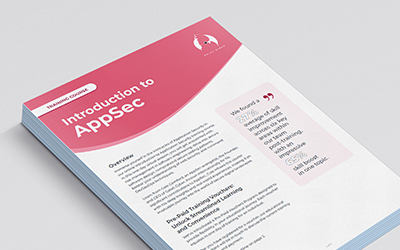Snyk’s latest State of Open Source Security report found that 80% of organisations ship code daily. Of these, only 27% continuously audit that code. If left unaudited, your mobile application could harbour vulnerabilities exposing your users to data breaches that compromise personal and financial information. Think of the banking app on your phone; you likely use it to pay bills, manage your accounts and update personal details. This app transmits actions completed between your phone and the bank. Imagine the consequences if a threat actor could compromise this app to steal your data.
Auditing the code you write and use is critical to securing your mobile app and preventing serious security breaches. Here are the vulnerabilities to be aware of and the practices you should undertake to secure your application’s code.
Source: Snyk.
Common vulnerabilities in mobile applications
Before reducing the number of vulnerabilities in your mobile app, you need to understand the key threats. A few common issues include:
Insecure communication: Mobile apps often exchange data via the network connected to the device, such as a mobile data network or Wi-Fi. Hackers can use the network to collect information from unprotected apps. For instance, a publicly accessible Wi-Fi network can open a pathway for attackers to intercept communications. Without adequate security measures, attackers can gain unauthorised access to sensitive information, jeopardising user privacy and the integrity of your application.
Data leakage due to lack of encryption: Data leakage occurs when an app does not encrypt data in transit. Many mobile apps collect and transmit sensitive user information, such as personal and payment data. Without encryption, data becomes vulnerable to interception by malicious actors. Encrypting data in transit and at rest protects user information from breaches.
Improper session handling: Improperly managed sessions allow threat actors to impersonate legitimate users and gain unauthorised access to sensitive information. Proper session handling techniques, such as secure tokens and session expiration mechanisms, prevent unauthorised access and protect legitimate user sessions from exploitation.
Secure coding practices to prevent these threats
Protecting your mobile app from data breaches starts with a few key techniques:
Securing your code: Protecting your application starts with securing the code from the ground up. Teams should implement strong coding practices, such as input validation, to prevent injection attacks and regularly review and test the code for vulnerabilities. Adopting automated tools and manual code reviews can help identify and rectify security issues early in development.
Using secure third-party code: Incorporating third-party code into your application can speed up development, but it introduces risks if the code is not secure. It is essential to assess third-party code and only use libraries and components that meet security standards. Regularly updating these elements is crucial to mitigate vulnerabilities that attackers could exploit.
Secure APIs: Application Programming Interfaces (APIs) enable applications to communicate and share data. Securing APIs involves using authentication, authorisation, and encryption to process only legitimate requests. Monitoring and logging API usage helps detect and respond to suspicious activities, enhancing the application’s security.
Testing for vulnerabilities in the app’s code
Ensuring the security of mobile applications is a complex and ongoing process that requires close attention throughout the software development lifecycle (SDLC). Each practice uncovers potential risks and removes vulnerabilities from your mobile app’s code.
Threat modelling identifies potential threats and vulnerabilities early in the development lifecycle, helping developers understand their application’s attack surface. By prioritising security measures based on identified risks, this process formulates strategies to mitigate, transfer, accept, or avoid these risks.
Security architecture review identifies vulnerabilities and recommends enhancements for stronger cyber defence. It thoroughly examines the app’s architecture, including its design, data flow, and integration with third-party services, to ensure compliance with security standards. The aim is to spot structural weaknesses exploitable by attackers and confirm the architecture’s support for secure coding practices and data protection.
Secure SDLC assessments examine the security requirements embedded in the planning phase, enforcing secure coding practices and completing regular tests. This assessment identifies security gaps and suggests improvements, minimising vulnerabilities throughout the app’s lifecycle.
Conclusion
Your application likely has vulnerabilities if you have never examined its code. Security issues can leave your mobile app open to data leakage, insecure communication, and improper session handling, which demand strategic countermeasures.
Securing mobile apps is an ongoing effort that requires adherence to security protocols and best practices. Using secure third-party code, encrypting sensitive data and ensuring API security will contribute to removing vulnerabilities and protecting your application and its users.
Galah Cyber can help you resolve mobile app vulnerabilities
Galah Cyber offers comprehensive AppSec Advisory services to help you identify, assess, and mitigate security risks throughout your application’s lifecycle. Our team of experts provides actionable insights and practical guidance to ensure your app is secure and compliant.
By partnering with Galah Cyber, you can:
- Identify vulnerabilities: Gain visibility into potential security weaknesses.
- Prioritise risks: Focus on addressing the most critical threats.
- Implement effective countermeasures: Implement practical strategies to enhance security.
- Ensure compliance: Adhere to industry regulations and best practices.
Don’t wait for a security breach to happen. Contact Galah Cyber today to learn how our AppSec Advisory services can safeguard your mobile application.







